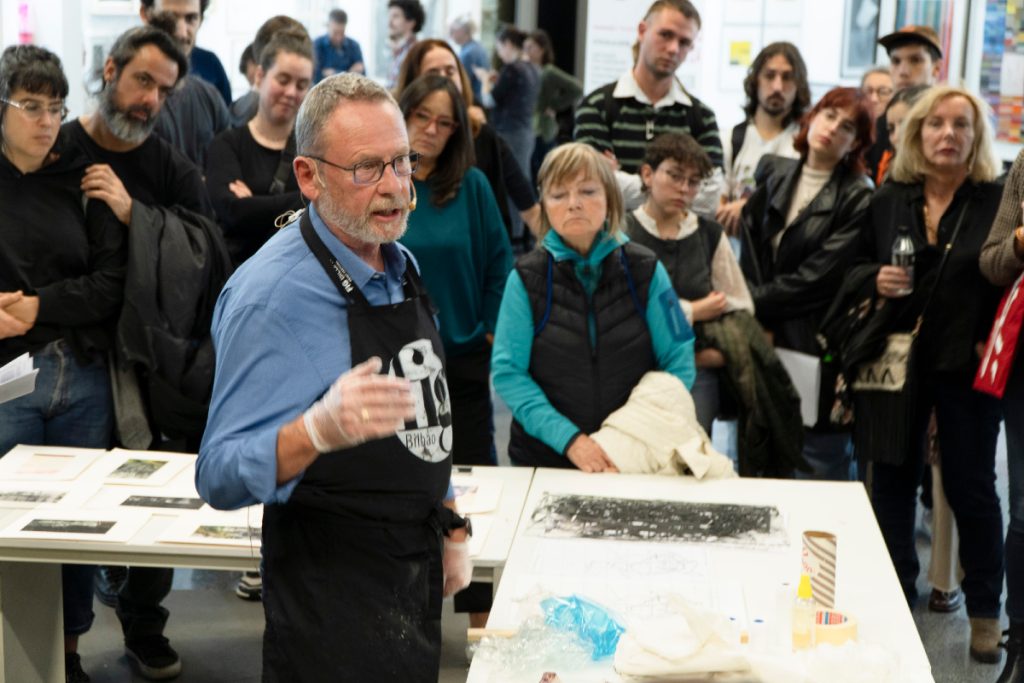
Aimé Put
°1957, Hasselt
Lives and works in Hasselt, Belgium
Active in several artistic disciplines, such as drawing, graphics, painting, pottery, installations and combinations for overall projects
Monotypes ‘Mind-Marks’, an artistic quest into imagination
Anyone who is prepared to look at art will encounter his imagination
“Das gröβte Verdienst eines Kϋnstlers sei es, geistig anzuregen und in dem Beschauer Gedanken, Gefϋhle und Empfindungen zu erwecken, und wären sie auch nicht die seinen.”
(Casper David Friedrich 1774–1840)
Translation – “The greatest merit for an artist is to wake up the intellect and to excite in the observer thoughts, feelings and experiences, even if they are not those of himself.”
Monotypes are a form of art that produces only one, absolutely unique, original print. By making a monotype the artist expresses his exquisite and strictly personal view on a singular exclusive moment. This technique of printing creates the possibility to draw with power but at the same time in a picturesque way. Once the image is printed, nothing more can be changed. It’s there for being exposed, or, depending on the artist’s final judgment, for getting destroyed. There is no third way.
It is my never ending search for depth and clarification that forces me to produce art at this high speed. Out of hundreds small notebook sketches, which really are my ‘mind-marks’, and an always returning composition screen, a new realization and afterwards a printed image come forth, created by a coincidental choice. Every single image, once visualized, starts tumbling round and round in my brain. This mental process permits me to discover innumerable different possibilities. In combination with my restless and impatient nature, work upon work comes into existence.
Making more art is, in my view, thinking over again an idea, looking anew, actualize it, aiming to make even better and more truthful images. And every time I’m confronted with the merciless conclusion that there is still so much more to discover, to try out and to accomplish. Every solution is only temporal. Creating art is in the first place a discovery trip in the atelier of my brain, a quest for new pictorial ideas. The physical atelier is the place where I, as far as possible, can perform. I’m endeavoring to translate my very own reality into images. Between failing and succeeding, amongst struggling with and processing the data coming to me, I have to find a way out. And there is always that tension between what I had prepared so very well and the things that slip away through my fingers.
As far as I am concerned, art can’t have an economic value in the first place. That would deteriorate the independence of my free will. No, art ought to be the undefiled result of my personal vision. There is no room for compromise: it is or it is not.
Kierkegaard’s notion of “Wiederholung” (*) is an important element in the monotypes-serial of Mind-Marks. It points to the relation between the work of art and its creator, as well as to the connection between the image and the observer. The repeatedly re-shaped image is a quest for the core substance of the process of creation, only made possible by means of a procedure of constantly working within one particular theme.
For Kierkegaard choosing for repetition is choosing for life in all its different aspects. When an artist re-creates over and over again a work of art, different and surprising aspects may come to life. By doing so, concentration on repetition doesn’t result in dullness or monotony, but brings to surface new and sometimes brilliant facets that otherwise would have remained unnoticed. Look at basic emotions like sadness, joy, hope or despair. Underneath their surfaces a multitude of emotional shades and gradations are hidden, waiting for being exposed. Each moment of creation is linked to its very own eternity. Repetition in the artistic sphere is for Aimé Put a condition of life, vital to keep control over his thoughts, his internal unrest and impatience.
(*) “Die Wiederholung umfaßt (…) das Ganze des menschliche Lebens, denn wer die Wiederholung wählt, der lebt.”
Translation – “Repetition contains (…) the whole of human life, because he who chooses repetition, lives.”